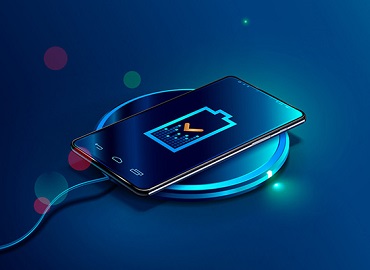Exploring Various Types Of Animation in Android App Development
By Mouad Oumous
Animation serves as the heartbeat of modern app design, infusing interactions with life, guiding users through experiences, and elevating the overall aesthetic appeal. In the Android ecosystem, developers have access to a rich array of animation techniques, each offering unique capabilities and opportunities for creativity. Let’s embark on a journey to explore the diverse landscape of animation in Android apps development.
View Animation
At the foundation of Android animation lies view animation. This type of animation allows developers to apply basic transformations such as scaling, rotation, translation, and fading to individual views. View animations can be defined declaratively in XML files or programmatically through the Animation API. While suitable for simple animations, view animation has limitations in terms of flexibility and performance, making it less suitable for complex interactions.
Property Animation
Property animation represents a significant evolution from view animation, offering developers greater flexibility and control over animated properties. With property animation, developers can animate virtually any property of a UI element, including its position, size, rotation, transparency, and more. By leveraging the Animator API, developers can create fluid, dynamic animations that respond to user input and system events. Property animation is the go-to choice for creating complex animations, transitions, and effects in Android apps.
Drawable Animation
Drawable animation is a staple for animating drawable resources such as images, shapes, or vector graphics. This type of animation is often used for frame-by-frame animations or simple sprite-based animations. Developers can define animations by specifying a sequence of drawable frames to be displayed over time. While drawable animation is effective for simple, lightweight animations, it may not be suitable for more complex interactions that require precise control over timing and interpolation.
Transition Animation
Transition animation plays a vital role in creating smooth, seamless transitions between different states or scenes within an app. Android’s Transition API enables developers to define animations that automatically animate changes to view hierarchies, such as adding, removing, or reordering views. Transition animation is invaluable for creating cohesive user experiences, especially when navigating between screens or interacting with UI elements. By employing transitions effectively, developers can enhance usability, provide visual feedback, and maintain user engagement.
Lottie Animation
Lottie animation, powered by the open-source Lottie library developed by Airbnb, enables developers to integrate complex, high-quality animations into their Android apps with ease. Lottie supports animations created with Adobe After Effects and exported as JSON files using the Bodymovin plugin. This streamlined workflow allows developers to incorporate rich, interactive animations into their apps without the need for extensive coding or performance optimizations. Lottie animation opens up a world of possibilities for creating immersive, visually stunning user experiences.
Physics-based Animation
Physics-based animation adds a layer of realism to UI interactions by simulating real-world physics principles such as gravity, velocity, and acceleration. Android’s PhysicsAnimation API simplifies the implementation of physics-based animations by handling the underlying physics calculations. Developers can create natural-looking interactions such as bouncing, springing, and dragging with minimal effort, enhancing the tactile feel and responsiveness of their apps.
Material Motion
Material motion, inspired by Google’s Material Design guidelines, emphasizes motion and transitions to create a cohesive, intuitive user experience. Material motion animations include shared axis transitions, fade-through transitions, elevation changes, and more, all designed to provide visual continuity and feedback throughout the app. By embracing material motion principles, developers can create apps that feel cohesive, polished, and delightful to use.
Conclusion
In conclusion, the diverse landscape of animation in Android app development offers developers a wide range of tools and techniques to bring their app designs to life. Whether it's simple view animations, complex property animations, or seamless transitions, choosing the right type of animation can significantly enhance the usability, aesthetics, and overall user experience of an Android app. By leveraging the power of animation, developers can create apps that captivate users, encourage engagement, and leave a lasting impression.

